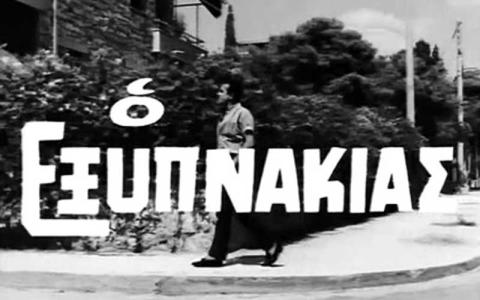Το Mουσείο Ακρόπολης είναι αρχαιολογικό μουσείο επικεντρωμένο στα ευρήματα του αρχαιολογικού χώρου της Ακρόπολης των Αθηνών. Το μουσείο κτίστηκε για να στεγάσει κάθε αντικείμενο που έχει βρεθεί πάνω στον ιερό βράχο της Ακρόπολης και στους πρόποδές του καλύπτοντας μία ευρεία χρονική περίοδο από την Μυκηναϊκή περίοδο έως την Ρωμαϊκή και Παλαιοχριστιανική Αθήνα ενώ ταυτόχρονα βρίσκεται πάνω στον αρχαιολογικό χώρο Μακρυγιάννη, κατάλοιπο των Ρωμαϊκών και πρώιμων βυζαντινών Αθηνών.
Η κίνηση αυτή συμβόλισε το ελληνικό αίτημα για επανένωση των μαρμάρων στο νέο Μουσείο της Ακρόπολης. Εκτίθενται περίπου 4.000 αντικείμενα σε ένα χώρο 14.000 τετραγωνικών μέτρων.
Το πρώτο μουσείο για τα ευρήματα της Ακρόπολης θεμελιώθηκε στα νοτιοανατολικά του Παρθενώνα στις 30 Δεκεμβρίου 1865 και ολοκληρώθηκε το 1874 σε σχέδια του αρχιτέκτονα Παναγή Κάλκου. Λίγα χρόνια αργότερα, στις ανασκαφές του 1885–1890, στις ανασκαφές του 1885–1890, οι Πέρσες κατά την Δεύτερη περσική εισβολή στην Ελλάδα και το μικρό μουσείο παρουσίασε ανάγκη για περισσότερο χώρο.
Γι' αυτόν τον λόγο κατασκευάστηκε στα 1888 ένα μικρότερο κτήριο στα ανατολικά του υπάρχοντος κτηρίου, στο οποίο τοποθετήθηκαν οι λιγότερο σημαντικές αρχαιότητες
Το κτήριο στηρίζεται σε υπερυψωμένους πυλώνες θεμελιωμένους ανάμεσα στις αρχαιότητες για την καλύτερη προστασία του αρχαιολογικού χώρου.
Σε αρκετά σημεία, στο εσωτερικό και το εξωτερικό του κτηρίου, τα δάπεδα είναι διαφανή, επιτρέποντας την θέαση των υποκείμενων αρχαιοτήτων. Το μουσείο παρέχει ακόμη ένα αμφιθέατρο 200 θέσεων, αίθουσα εικονικής πραγματικότητας, χώρο επισήμων και αίθουσα περιοδικών εκθέσεων.
The Acropolis Museum is an archaeological museum centered on the findings of the archaeological site of the Acropolis of Athens. The
a museum was built to house every object that has been found on the sacred rock of the Acropolis and at its foothills
covering a wide period of time from the Mycenaean period to the Roman and Early Christian Athens while at the same time
is located on the archaeological site of Makrigianni, a remnant of Roman and early Byzantine Athens.
This movement symbolized the Greek demand for the reunification of the marbles in the new Acropolis Museum. About 4,000 people are exposed
objects in an area of ??14,000 square meters.
The first museum for the findings of the Acropolis was founded on the south-east of the Parthenon on 30 December 1865 and
was completed in 1874 by architect Panayi Kalkou. A few years later, in the excavations of 1885-1890, in the excavations of 1885-1890, the Persians during the Second Persian invasion of Greece and the small museum showed a need for
more space.
For this reason a smaller building was built in 1888 to the east of the existing building, in which the
less important antiquities
The building is based on elevated pillars founded between antiquities for better protection of the archaeological
space.
In several places, inside and outside the building, the floors are transparent, allowing viewing of the underlying
antiquities. The museum also provides a 200-seat amphitheater, a virtual reality room, an official room and a hall
periodic reports.
If you like this video click the like button and subschribe to my to see more the acient greece!!
(Paris the Greek)
discovering ancient Greece
Η κίνηση αυτή συμβόλισε το ελληνικό αίτημα για επανένωση των μαρμάρων στο νέο Μουσείο της Ακρόπολης. Εκτίθενται περίπου 4.000 αντικείμενα σε ένα χώρο 14.000 τετραγωνικών μέτρων.
Το πρώτο μουσείο για τα ευρήματα της Ακρόπολης θεμελιώθηκε στα νοτιοανατολικά του Παρθενώνα στις 30 Δεκεμβρίου 1865 και ολοκληρώθηκε το 1874 σε σχέδια του αρχιτέκτονα Παναγή Κάλκου. Λίγα χρόνια αργότερα, στις ανασκαφές του 1885–1890, στις ανασκαφές του 1885–1890, οι Πέρσες κατά την Δεύτερη περσική εισβολή στην Ελλάδα και το μικρό μουσείο παρουσίασε ανάγκη για περισσότερο χώρο.
Γι' αυτόν τον λόγο κατασκευάστηκε στα 1888 ένα μικρότερο κτήριο στα ανατολικά του υπάρχοντος κτηρίου, στο οποίο τοποθετήθηκαν οι λιγότερο σημαντικές αρχαιότητες
Το κτήριο στηρίζεται σε υπερυψωμένους πυλώνες θεμελιωμένους ανάμεσα στις αρχαιότητες για την καλύτερη προστασία του αρχαιολογικού χώρου.
Σε αρκετά σημεία, στο εσωτερικό και το εξωτερικό του κτηρίου, τα δάπεδα είναι διαφανή, επιτρέποντας την θέαση των υποκείμενων αρχαιοτήτων. Το μουσείο παρέχει ακόμη ένα αμφιθέατρο 200 θέσεων, αίθουσα εικονικής πραγματικότητας, χώρο επισήμων και αίθουσα περιοδικών εκθέσεων.
The Acropolis Museum is an archaeological museum centered on the findings of the archaeological site of the Acropolis of Athens. The
a museum was built to house every object that has been found on the sacred rock of the Acropolis and at its foothills
covering a wide period of time from the Mycenaean period to the Roman and Early Christian Athens while at the same time
is located on the archaeological site of Makrigianni, a remnant of Roman and early Byzantine Athens.
This movement symbolized the Greek demand for the reunification of the marbles in the new Acropolis Museum. About 4,000 people are exposed
objects in an area of ??14,000 square meters.
The first museum for the findings of the Acropolis was founded on the south-east of the Parthenon on 30 December 1865 and
was completed in 1874 by architect Panayi Kalkou. A few years later, in the excavations of 1885-1890, in the excavations of 1885-1890, the Persians during the Second Persian invasion of Greece and the small museum showed a need for
more space.
For this reason a smaller building was built in 1888 to the east of the existing building, in which the
less important antiquities
The building is based on elevated pillars founded between antiquities for better protection of the archaeological
space.
In several places, inside and outside the building, the floors are transparent, allowing viewing of the underlying
antiquities. The museum also provides a 200-seat amphitheater, a virtual reality room, an official room and a hall
periodic reports.
If you like this video click the like button and subschribe to my to see more the acient greece!!
(Paris the Greek)
discovering ancient Greece
- Κατηγορίες
- Education
Γίνε ο πρώτος που θα σχολιάσει







![Η Αλίκη στο Ναυτικό [1961]](https://www.eltube.gr/uploads/thumbs/39f92cd00-1.jpg)




